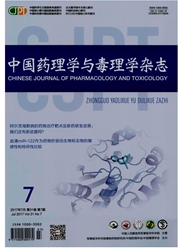

 中文摘要:
中文摘要:
氧化应激及其所致的组织损伤与许多疾病的发生发展过程关系密切。脂氧合酶是一种多功能氧化酶,能参与多种内源性化学物和药物、环境污染物等外源化学物的氧化代谢,并在氧化反应过程中通过多种方式产生活性氧。脂氧合酶能催化内源性化学物如花生四烯酸的反应并伴有活性氧的产生,脂氧合酶还能通过影响细胞间的信号转导而激活其他活性氧产生途径;此外,脂氧合酶还能催化外源化学物代谢为高活性的自由基中间体而诱发活性氧的产生。这些过程中产生的活性氧超过抗氧化系统的清除能力时可导致机体氧化抗氧化系统的失衡而诱发氧化应激,这可能是这些化学物发挥毒性作用的重要机制之一。
 英文摘要:
英文摘要:
There is a close relationship between oxidative stress induced tissue damage and many diseases. As a multi-function oxidase,lipoxygenase can generate reactive oxygen species( ROS) by oxidatively metabolizing various endogenous and exogenous chemicals such as drugs and environmental pollutants. Lipoxygense can catalyze endogenous chemical reaction,such as arachidonic acid and produce ROS. Lipoxygenase can be also activated in other ways to generate ROS by activating signal transduction. Moreover,some exogenous chemicals can be metabolized into highly reactive radical intermediates by lipoxygenase,inducing ROS generation. The accumulation of intracellar ROS can damage intracellar redox balance and induce oxidative stress. That may be one of the possible toxic effect mechanisms of chemical agents.
 同期刊论文项目
同期刊论文项目
 同项目期刊论文
同项目期刊论文
 期刊信息
期刊信息
